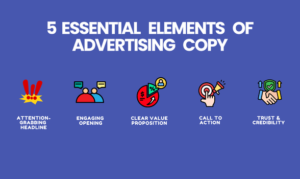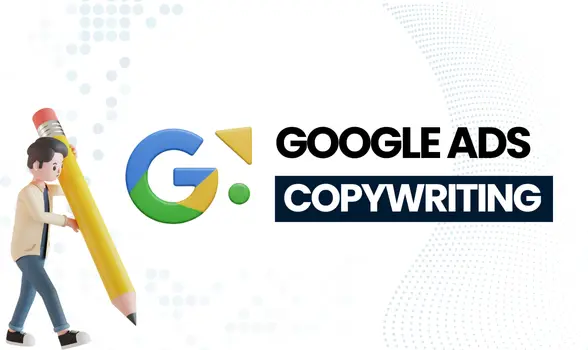Mastering Google Ads copywriting is crucial for standing out in search results, engaging potential customers, and driving cost-effective conversions. In 2025’s hyper-competitive landscape, data shows that the quality and relevance of ad copy can make or break a campaign.
What is Google Ads copy?
Google Ads copy refers to the written content appearing in Google advertisements, including headlines and descriptions. It communicates a brand’s message, offers, and unique selling points within a limited character count.
Effective ad copy bridges user intent and business objectives. It guides searchers from their queries to tailored offers and ultimately, to compelling landing pages that convert.
Copywriting for Google Ads blends creativity, precision, and strategy. Every word must serve a purpose, drawing the right audience and moving them toward action. Responsive Search Ads, Display Ads, and Shopping Ads all depend on impactful copy.
Why Your Google Ad Copy Matters
Your Google Ad copy is the frontline for engagement. Studies reveal that ads closely matching user intent and search queries enjoy higher click-through rates (CTR) and lower costs per click (CPC).
Quality ad copy enhances ad relevance, which Google rewards with better ad placements and reduced media spend. Strong headlines and descriptions also contribute to higher Quality Scores, supporting both visibility and ROI.
Copy that resonates leads directly to conversions. Brands leveraging skillful copywriting often outperform competitors, maximizing the value of every advertising dollar spent.
What are the rules for Google ad copy?
Google enforces clear guidelines for ad copy to ensure a positive user experience:
Ads must be clear, relevant, and free from misleading claims or clickbait. Prohibited content includes inappropriate language, misinformation, and restricted goods such as alcohol or gambling.
There are strict character limits—typically 30 characters for headlines and 90 for descriptions in search ads. Accuracy in spelling and grammar is mandatory.
Punctuation misuse, excessive capitalization, or repetition can lead to ad disapproval. The copy should align with the advertised landing page and avoid “bait and switch” techniques.
Certain calls to action, like “Click here,” are discouraged in favor of value-driven phrasing such as “Shop now” or “Compare features.” Complying with these rules preserves the brand’s trustworthiness and ensures ads run seamlessly.
Google Ads Copy Formatting & Best Practices
Formatting is key in the limited space of Google Ads. Use short, impactful sentences with active language, breaking up longer thoughts for readability.
Incorporate keywords that closely match user queries. Group related messages, features, and benefits to increase continuity and relevance.
Regularly test variations in both headlines and descriptions. Small tweaks can yield substantial improvements in click-through and conversion rates.
Consistent review and optimization of grammar and clarity, as well as keeping messaging direct and focused, enhances copy performance.
Google Search Ads
Google Search Ads appear on search engine results pages (SERPs) and are governed by strict formatting and targeting guidelines.
Google Search Ads Copy Best Practices
Always use keywords in your ad copy.
Integrating keywords used in search queries ensures high relevancy. Ads mirroring user language receive better placement and increased CTR.
Avoid excessive keyword stuffing. Instead, use keywords naturally in headlines and descriptions to affirm relevance while preserving readability.
Include Your Brand Name as a Headline Option
Including the brand name in headlines boosts trust and recall. It’s especially vital for branded campaigns targeting previous visitors or customers.
Use Social Proof
Incorporate testimonials, reviews, or star ratings to enhance credibility. Social proof reassures users that others have benefited, increasing the likelihood of engagement.
Mention Core USPs That Set You Apart
Emphasize unique selling points—such as free shipping, rapid service, or exclusive offers—directly within the copy. Differentiation is key in crowded ad spaces.
Group Like-Keywords Together Based on Pain Point or Offer Value
Cluster ads by user needs or product advantages. This segmentation allows for tailored messaging that connects more deeply with each target audience.
Break Up Thoughts with Periods
Short sentences increase readability and call attention to key benefits. Brevity helps users process information quickly and raises engagement.
Double Check Grammar & Formatting for Consistency
Well-edited ads project professionalism and clarity. Mistakes in language or punctuation can reduce quality score and trust.
Be Insanely Direct
Avoid vague statements. Use clear, confident calls to action and direct phrasing that make next steps obvious.
Google Shopping Ads
Google Shopping Ads appear in product-oriented search results and focus heavily on specifications and purchasing details.
Google Shopping Ads Copy Best Practices
Feature a Variety of Keywords in Your Product Listing
Include both broad and specific keywords relevant to the product. This enhances visibility for shoppers at different stages in their journey.
Include All Essential Information Users Need to Purchase
Product listings should contain details such as price, size, color, and availability. Comprehensive information streamlines the user’s decision-making process.
Be Conscious of Formatting
Use bullet points, short lines, or structured sentences for easy scanning. Proper formatting ensures listings are clean and user-friendly.
Google Display Ads
Google Display Ads reach users across sites in Google’s ad network, relying more on visuals but still leaning on persuasive copy.
Google Display Ads Copy Best Practices
Keep Your Targeted Audience in Mind
Tailor messaging and tone to match the audience once demographics and interests are analyzed. Personalized, relevant copy creates a stronger connection and engagement.
Don’t Worry About Maxing Out Your Character Count
Use concise, powerful language rather than filling every available space. Short, impactful phrases outperform longer, cluttered messages.
Consider Including Your Brand Name
Consistent branding in headlines or call-to-action statements builds authority and aids recall, especially for campaigns focused on awareness.
Google Ad Copy Mistakes to Avoid
Avoid mismatched messaging, excessive jargon, and failing to deliver on the promise made in your ad. Irrelevance to the user’s search intent lowers both CTR and quality score.
Repetitive, generic, or vague copy fails to stand out and risks high costs and poor performance. Overuse of filler words or technical terms alienates users.
Neglecting testing and optimization prevents improvement. Regular A/B testing and reviewing performance metrics are critical for ongoing copy effectiveness.
5 Essential Elements of Advertising Copy

Strong ad copy is built on five foundational elements. Including each ensures ads are compelling, credible, and persuasive.
1. Attention-Grabbing Headline
The headline is the most visible component. Use keywords, pain points, and product benefits to seize attention instantly.
2. Engaging Opening
The opening line should pull the reader in, addressing their need, question, or pain point swiftly. Use curiosity or empathy to spark interest.
3. Clear Value Proposition
Communicate exactly what the user will gain—saving money, solving a problem, or getting exclusive access. Clarity about value improves conversion rates.
4. Compelling Call to Action (CTA)
Direct users to the next step, be it buying, signing up, or learning more. Active, specific verbs outperform generic messages.
5. Trust and Credibility Elements
Social proof, guarantees, awards, or ratings set the brand apart. These elements reduce friction and build confidence before users click through.
Conclusion
Exceptional Google Ads copywriting drives visibility, engagement, and conversions. By following proven rules and best practices, tailoring messages to formats and audiences, and optimizing continuously, advertisers unlock better results.
In a competitive market, clarity, relevance, and strategic structure hold the key to campaign success. Effective ad copy doesn’t just reach users—it inspires action and delivers measurable value.




